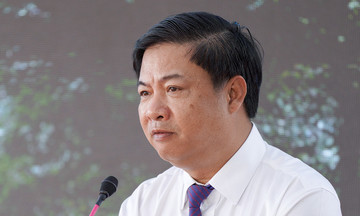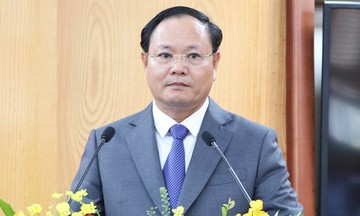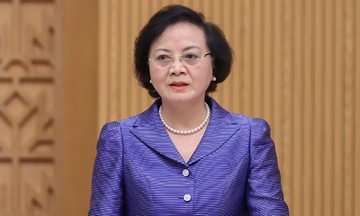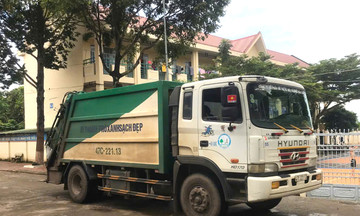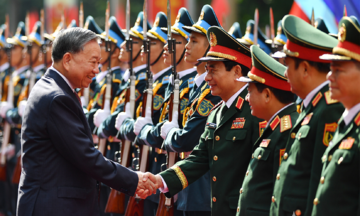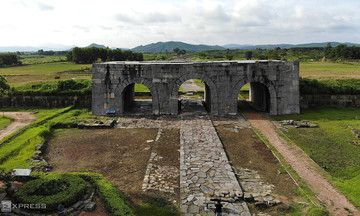The Hanoi Ring Road 4 project comprises seven sub-projects. Sub-project 3, the backbone of the project, is a 113-km expressway passing through Hanoi, Hung Yen, and Bac Ninh. It starts at the Hanoi-Lao Cai Expressway and ends at the Noi Bai-Ha Long Expressway, including a 103-km main route and a 9.7-km connecting section towards the Noi Bai-Ha Long Expressway.
The first phase of the project will feature four lanes with a roadbed width of 17 m and bridges spanning 17.5 m. The bridges over the Red River and Duong River will be wider, at 24.5 m, to accommodate two additional lanes for motorcycles and rudimentary vehicles.
The expressway includes 13 elevated sections totaling approximately 80 km (about 71% of the total length), and 32 km at ground level.
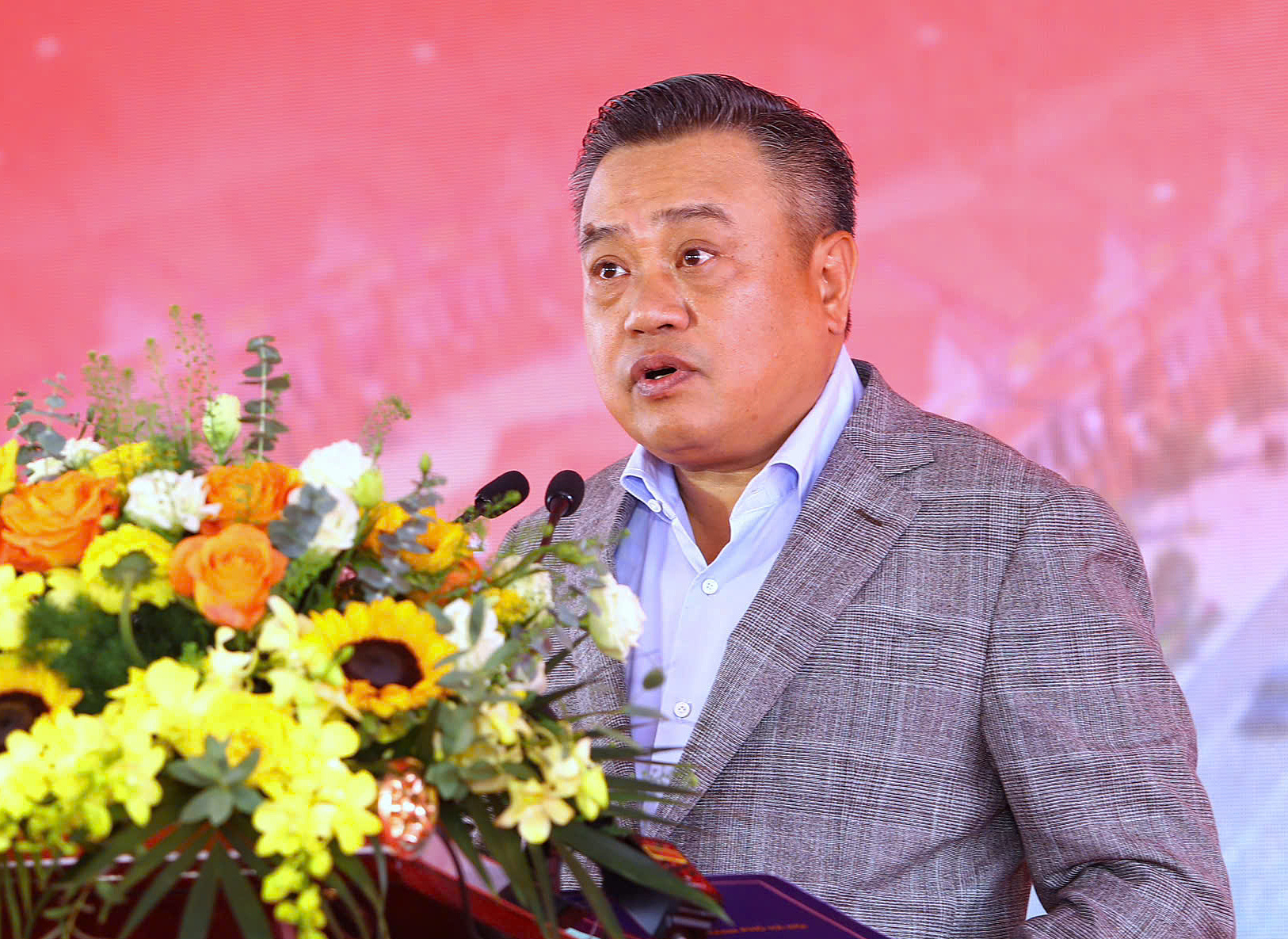 |
Tran Si Thanh, Chairman of the Hanoi People's Committee. Photo: Anh Duy |
Tran Si Thanh, Chairman of the Hanoi People's Committee. Photo: Anh Duy
The project is divided into two sub-projects: one using state capital to build the Hong Ha, Me So, and Hoai Thuong bridges, and a public-private partnership (PPP) sub-project for the section from before the National Highway 6 intersection to the end of the Hanoi-Hai Phong Expressway intersection, including the 9.7-km connecting section.
The project's total investment is 56,290 billion VND, with 47% from the state budget and 52% from investors. The consortium of investors includes CityLand Investment Co., Ltd., Saigon Sunflower Co., Ltd., Vietnam Expressway Development Investment Corporation (VEC), and Horizon Investment Joint Stock Company.
The project is expected to take around 36 months to complete, with operations commencing in 6/2028 and a payback period of 21 years.
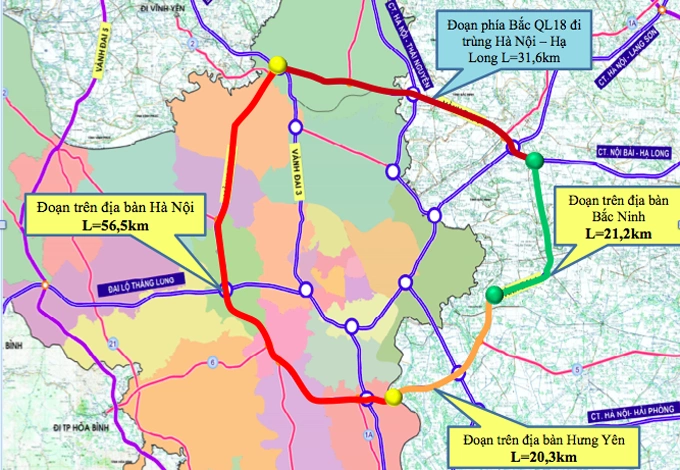 |
The route of Ring Road 4. Photo: Hanoi People's Committee |
The route of Ring Road 4. Photo: Hanoi People's Committee
Tran Si Thanh, Chairman of the Hanoi People's Committee, stated that the timely investment in Ring Road 4 is crucial for connecting inter-provincial and intra-provincial transportation. It will create corridors for socioeconomic development, expand development space for Hanoi and neighboring provinces, attract investment, and alleviate population density in the central urban area. The project will also divert traffic from afar, reducing the pressure on inter-provincial vehicles passing through Hanoi's center, especially the currently overloaded Ring Road 3.
Moreover, the completion of Ring Road 4, along with the investment in Ring Road 5 passing through five provinces and cities before 2030, will establish a regional transportation network for the capital and its surrounding areas. This network will improve connectivity between localities, combat congestion, and reduce freight costs.
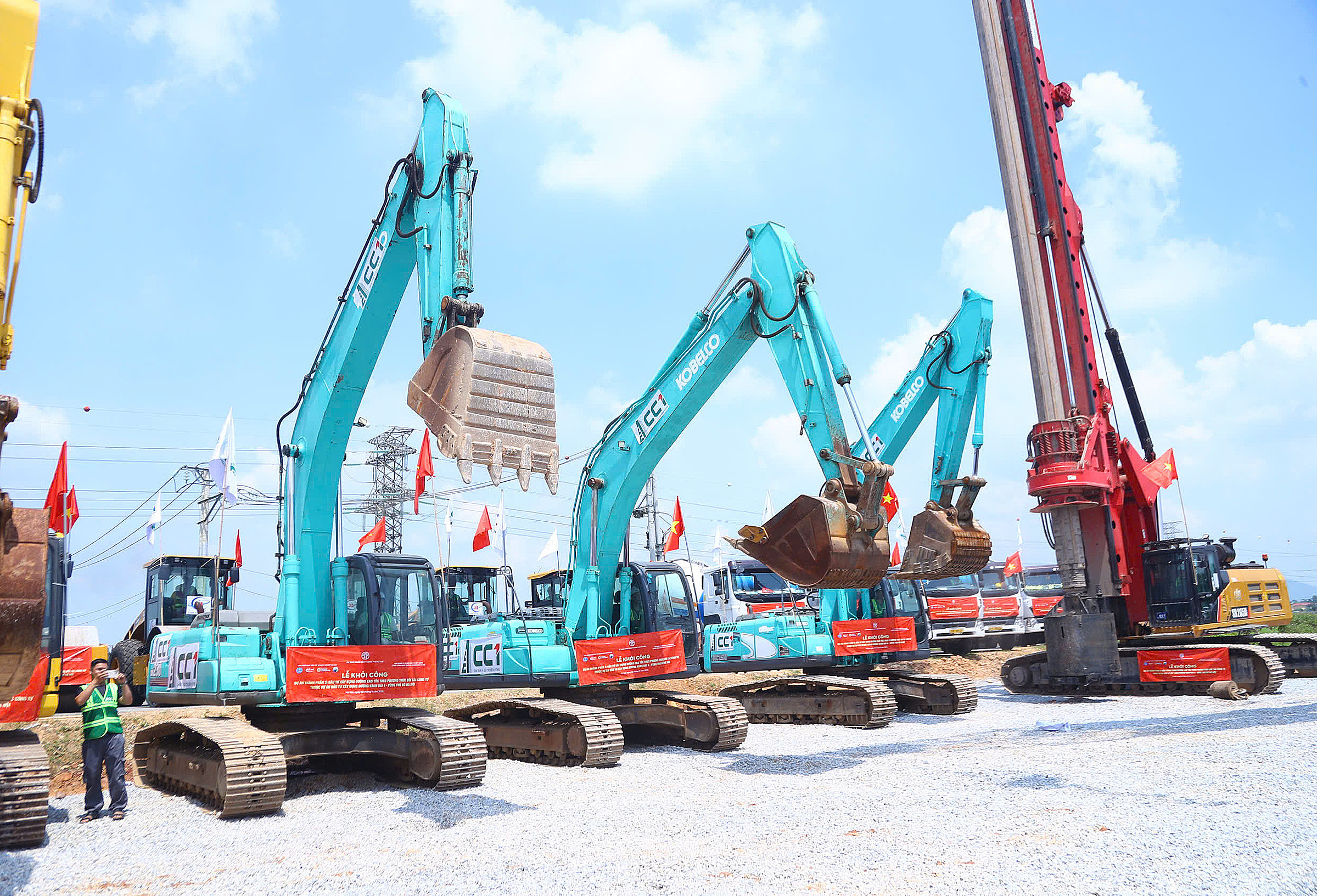 |
Machinery and equipment of the contractors building the expressway. Photo: Anh Duy |
Machinery and equipment of the contractors building the expressway. Photo: Anh Duy
Hanoi is initiating the Ring Road 4 project, including the Hong Ha and Me So bridges. Along with the previously started Tu Lien, Van Phuc, and Ngoc Hoi bridges, construction will soon begin on the Thuong Cat and Tran Hung Dao bridges, bringing the total number of major bridges over the Red River built in 2025 to seven.
At the groundbreaking ceremony, Vu Hong Thanh, Vice Chairman of the National Assembly, stated that Ring Road 4 aims to be completed within 30 months. This will connect satellite urban areas within the capital region and boost the city's economic growth to 8% in 2025 and double digits in the following years.
To ensure the project's quality, efficiency, and safety, Vu Hong Thanh requested that localities and ministries focus on implementation. He emphasized the need for Hanoi to direct the project enterprise in developing scientific construction plans and ensuring safe and smooth execution.
The project enterprise should mobilize modern equipment and personnel, adhere to regulations, and ensure progress and quality. Localities need to expedite site clearance and handover to the project enterprise to maintain the schedule.
Doan Loan



